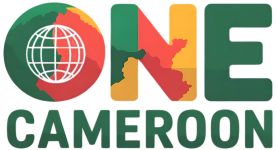Fashion and textiles occupy a significant place in Cameroon’s economy and cultural identity. Beyond serving as functional garments, traditional fabrics and contemporary designs reflect ethnic heritage, social status, and personal expression. In recent years, Cameroonian designers have leveraged indigenous textiles—ankara, African batik, raffia—to create ready-to-wear lines, participating in regional fashion weeks and exporting garments to diasporic markets. The textile value chain—from cotton farming to tailoring—engages millions, fostering entrepreneurial opportunities and skills development.
Cotton production primarily occurs in the northern regions—Far North, North, and Adamawa—where smallholder farmers grow Gossypium hirsutum. Government- and donor-funded programs provide improved seeds, fertilizers, and training on integrated pest management to mitigate bollworm infestations. Post-harvest ginning facilities in Maroua and Garoua separate lint from seeds; lint is graded, baled, and sold domestically or exported to textile mills in Yaoundé. Efforts by the Cotton Development Authority (SODECOTON) aim to increase yield to over 1 tonne per hectare by 2030.
Textile industries in Cameroon include both large-scale and cottage enterprises. Cotontchad, a former state-owned textile mill in Douala, produced cotton cloth under brands like Khadia and Prince d’Arabie, dominating West and Central African markets in the 1980s. After privatization and operational declines, smaller private textile workshops emerged in Douala’s Bonapriso and Makepe districts. These workshops import grey fabric from China and India, transforming it into finished garments sold at Yaoundé’s Mfoundi and Mokolo markets. However, rising labor costs and competition from imported ready-to-wear pose challenges for domestic production.
At the grassroots level, tailors (locally called “couturiers”) provide custom-made clothing services. Family-run tailoring shops line the streets of Buea, Bafoussam, and Bamenda, where customers bring chosen fabrics—ankara, brocade, and lace—and discuss styles, measurements, and embellishments. Tailors create elaborate designs for weddings, baptisms, and official ceremonies: gowns with multiple layers of tulle, intricately beaded bodices, and padded shoulders reflecting the latest global trends. Embroidery shops adjacent to these ateliers add hand-done patterns using machine embroidery, often featuring Cameroonian motifs—elephants, palm trees, or pygmy figures.
Contemporary designers are redefining Cameroonian fashion on the global stage. Brands like Haman Woo (Yaoundé) and Manissa Lama (Douala) showcase collections at Lagos Fashion Week and South African Fashion Week. These designers experiment with raw textiles—raw silk, raffia, raffia-infused blends—and incorporate traditional Adinkra symbols or Bamum script into patterns. Menswear labels such as “B.M.P. Couture” craft tailored suits using African prints for linings, marrying European cuts with African flair. Their ready-to-wear lines sell through boutiques in Douala’s Bali district and online platforms serving the diaspora.
Fashion education supports the sector’s growth. The Institut National de la Jeunesse et des Sports (INJS) in Yaoundé offers diplomas in fashion design and garment construction. Private schools like CréaDesign Academy in Douala teach pattern drafting, draping, and business management. Alumni from these institutions often become entrepreneurial tailors, launching their own labels or collaborating with NGOs to teach sewing skills to underprivileged youth.
Traditional textiles hold profound cultural significance. The Kente-like “Ndop” cloth—originally reserved for Bamum rulers—features black-and-white geometric motifs on indigo-dyed backgrounds. Today, Ndop-inspired fabrics appear in ceremonial robes, interior décor, and modern accessories. In western regions, women weave raffia skirts (“shuka”) dyed with local indigo using batik techniques. These garments, worn during traditional dances and festivals, affirm ethnic identities and keep ancestral art forms alive.
Local fashion shows and pop-up markets draw crowds. “Fashion Village,” a bi-annual event in Douala, brings designers, stylists, and models together. Runways feature models of diverse backgrounds wearing Afro-futuristic outfits—metallic materials, bold silhouettes, and biodegradable accessories crafted from banana fibers. Meanwhile, boutiques in Yaoundé’s Melen district host “trunk shows,” where limited-edition pieces are unveiled. Stylists partner with hairdressers and makeup artists to offer full looks highlighting Cameroonian beauty standards.
Online retail is slowly gaining traction. E-commerce platforms such as “ShopAfrique” and “Makala Cam” allow designers to showcase their collections to an international audience. Social media influencers based in Douala and Yaoundé promote Cameroonian brands, styling outfits for weddings, corporate events, and music videos. Hashtags like #CameroonianFashion and #MadeInCamer exist on Instagram and TikTok, encouraging diaspora communities to support local creators.
Despite obstacles—import competition, limited infrastructure, and occasional power outages—Cameroon’s fashion and textile sectors demonstrate resilience and creativity. By blending indigenous artistry with modern techniques, local designers and artisans contribute to both cultural preservation and economic development. Each stitch tells a story of Cameroonian heritage, innovation, and the entrepreneurial spirit driving the country forward.









